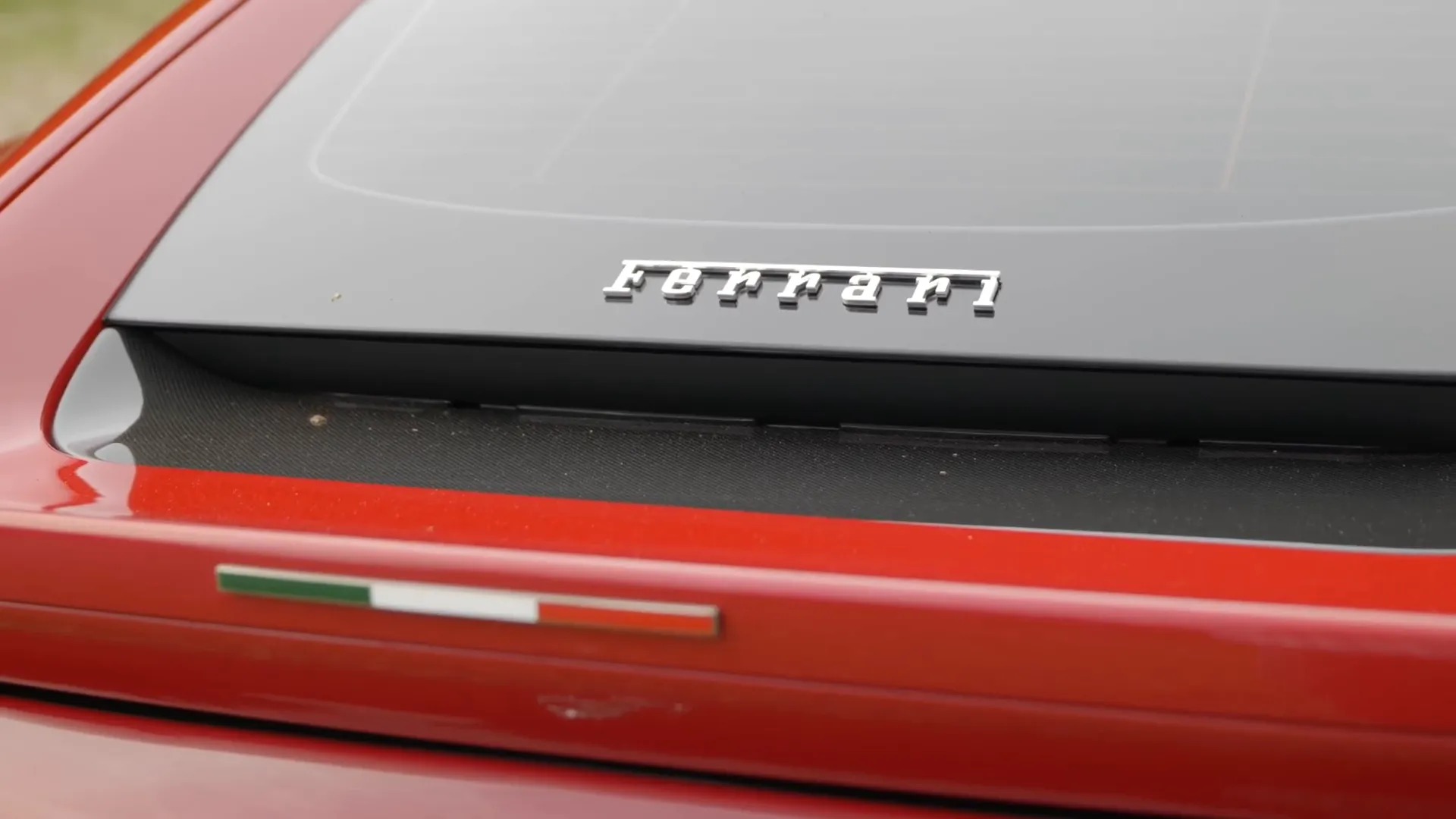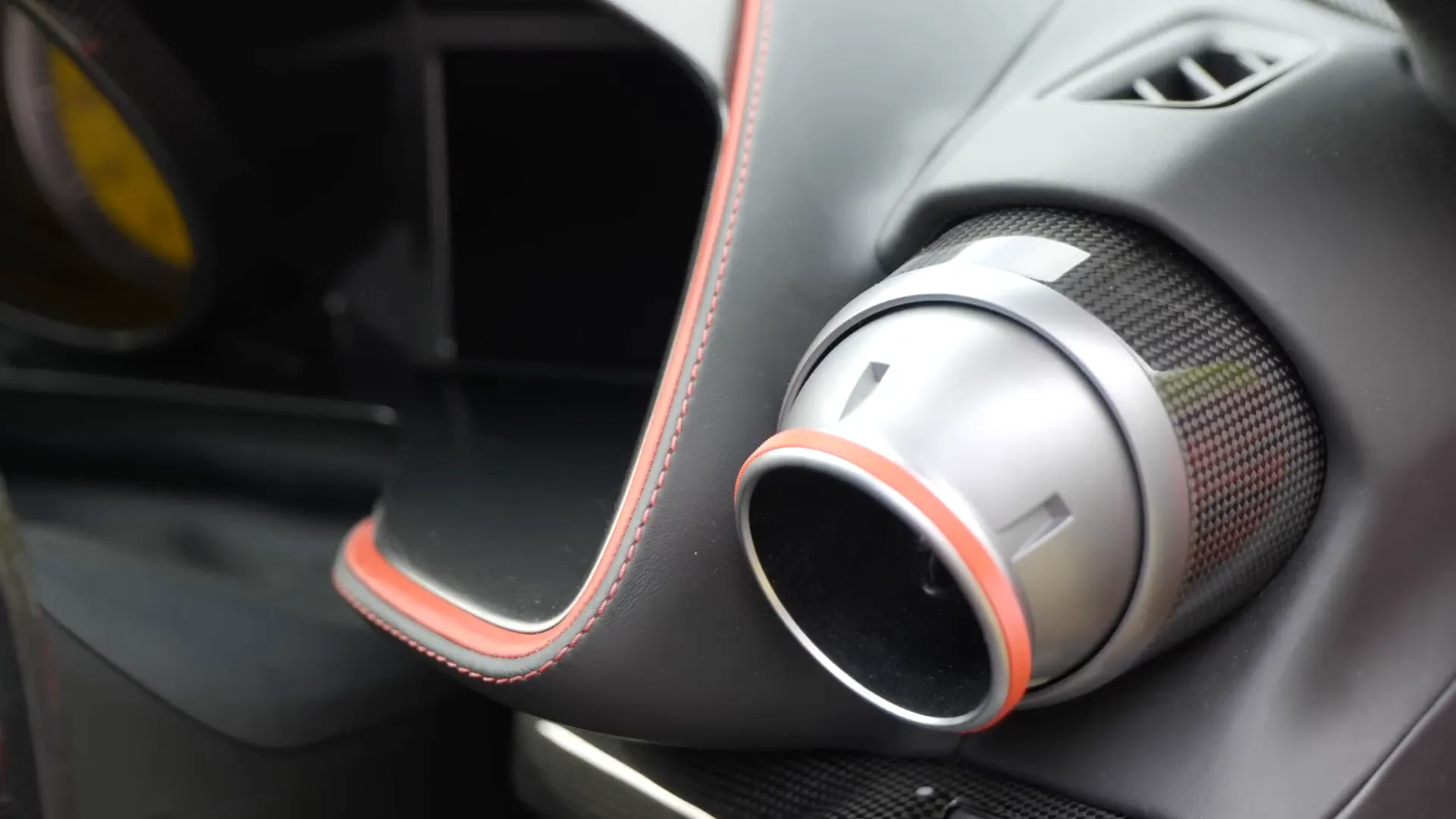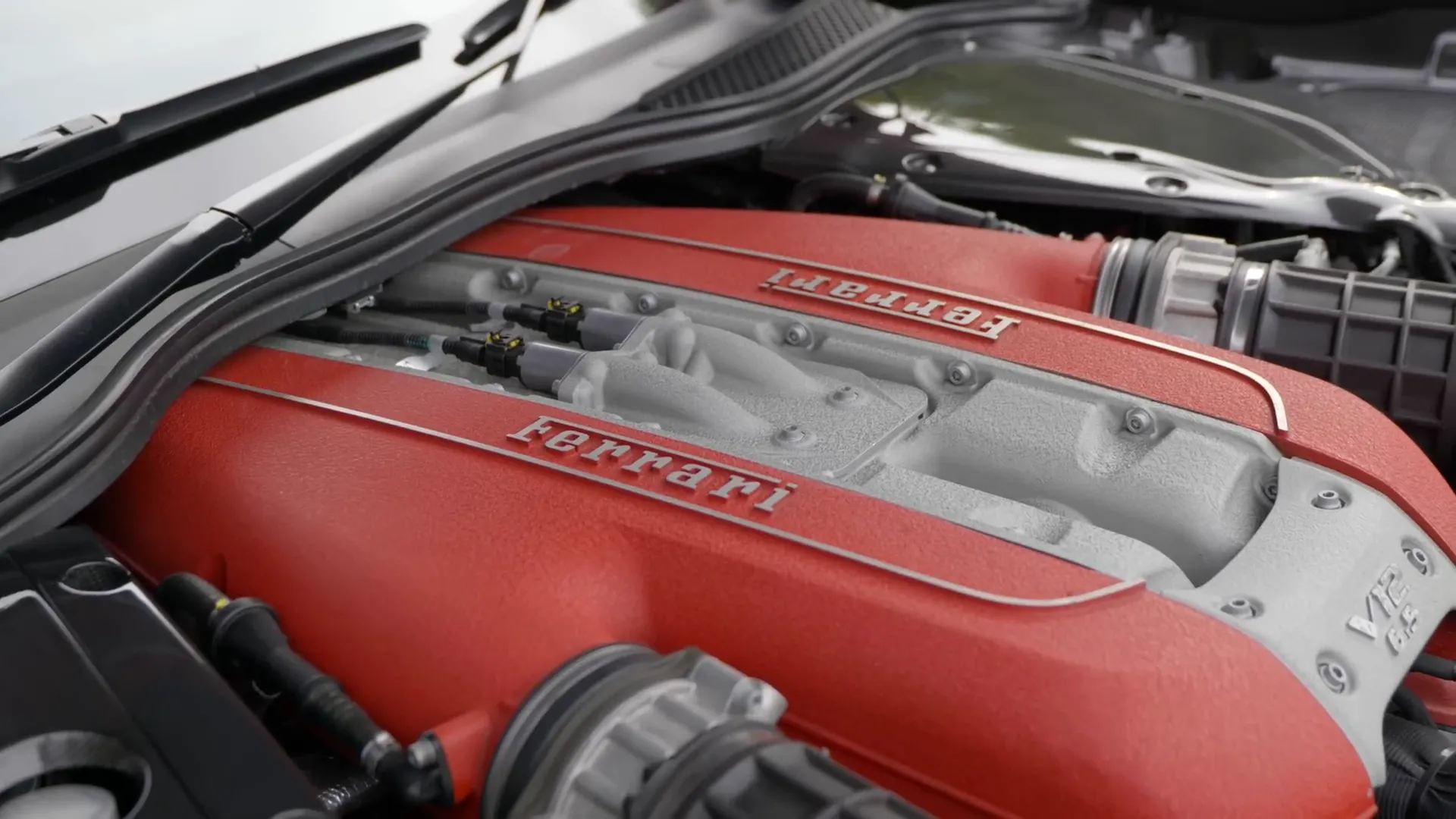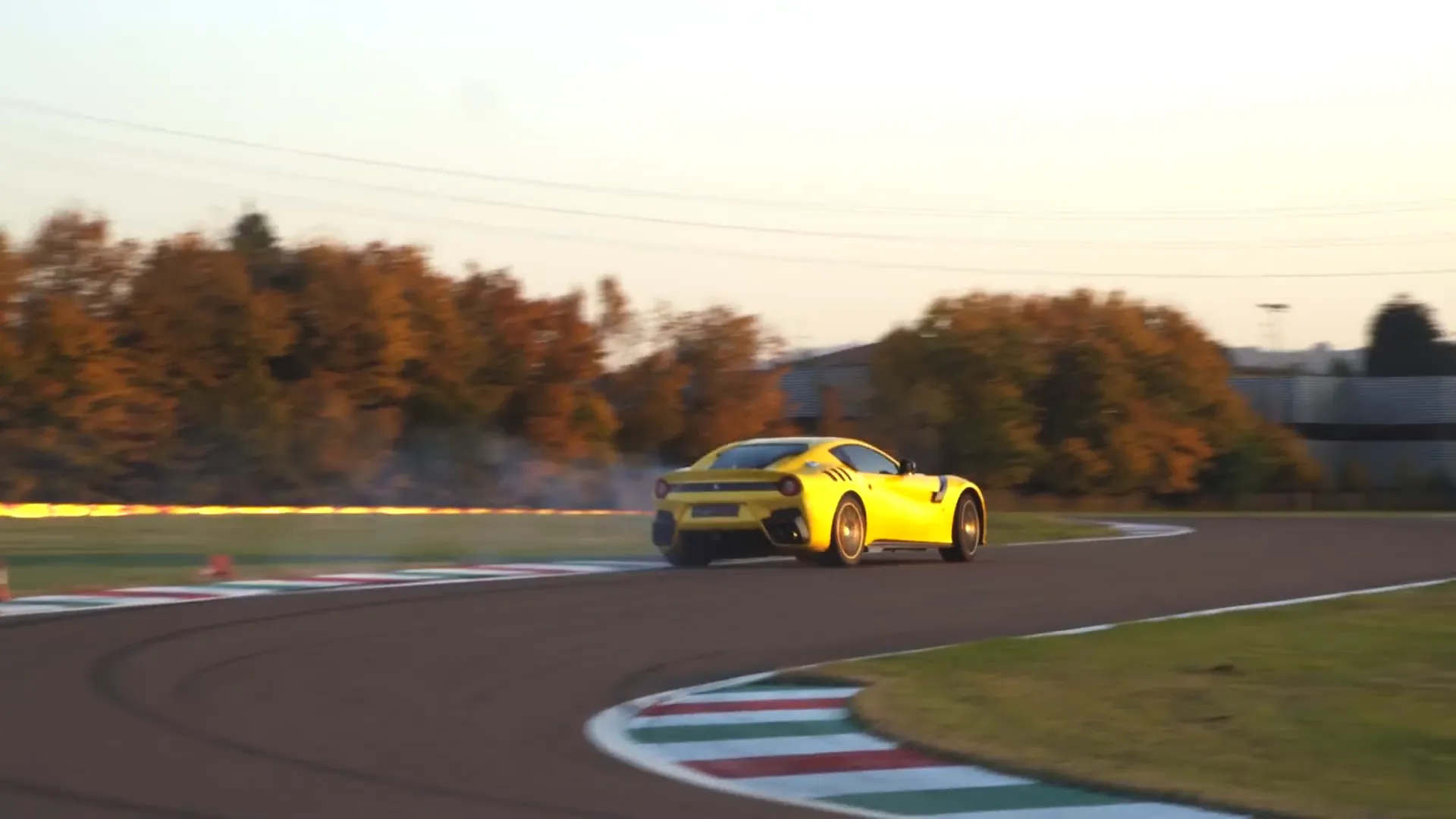Every single Ferrari ever made is a special thing, but the 812 Superfast stands out even among such illustrious company. This car is almost certain to be the last series production naturally aspirated V12 Ferrari without any form of hybrid assistance. It's another entry in a long line of fabulous front-engined V12 Grand Tourers, and let's be honest, it's a real object of desire. It's one of those rare cars where I'd actually think about forgiving someone who bought one just to look at it, but they'd still be missing the very best bit: the driving experience.
Now, not everybody has unlimited funds, and I'm sure most people considering one of these are also looking at F12s, wondering if the extra outlay can really be justified. I am fortunate enough to call myself an F12 owner, having thoroughly enjoyed it over the last six months, putting over 6,000 miles on the clock. Thanks to Ferrari, I've also been able to drive the 812 GTS, the convertible version of this car, but Ferrari will tell you that it has a very different setup aimed at a slightly different driving style.
Thanks to good guy Dennis, I’m finally able to experience the 812 Superfast—the F12’s direct successor. In this post, I’ll be drawing many comparisons between the two cars, telling you what in my opinion is good, bad, or simply a matter of personal preference. Hopefully, if you are in the enviable position of being able to choose between the two, this will be of some assistance. If not, this will simply be a glorious tribute to the Ferrari V12. Enjoy!
Design Changes: Ferrari's Unique Approach
Ferrari tends to do things a little differently than most car companies. For your average firm like BMW or Mercedes, models tend to have a lifespan of seven or eight years, with a facelift right in the middle. Sometimes these changes can be significant—new engines, new infotainment—but often they are subtle. What Ferrari does is take a core platform and heavily rework it. For instance, the 355 is a reworking of the 348, and the 430 is a reworking of the 360. Here, the 812 started as an F12, but this is far more than what you would generally consider a facelift.
Let’s start with the obvious—the looks. The 812 is distinctly different in styling from its predecessor. One reason for this is that the F12 is the last car styled by Pininfarina with Ferrari's input, while here, Ferrari did all the styling work themselves. And let’s be honest, it’s not exactly an ugly car! Historically, I’ve flitted between liking the F12 or the 812 more. I prefer the return to the traditional quad lamps at the back, but I love the front end of the F12 with its dramatically sculpted bonnet. The side profile of the F12 may be a little less exciting than this one, but they are dimensionally very similar.
If you haven’t experienced the whole Ferrari thing, you might have heard about the public's reaction. In Britain, stories often lean negative—people spitting at Ferraris, or getting grief for owning one. I'll be honest; I really don’t tend to get that kind of treatment. Maybe it’s because I’m not revving my cars in Barclay Square; I’m out here enjoying them as Enzo intended. The way the public reacts to a front-engine Ferrari is very different from how they see a mid-engine one. Mid-engine cars are often associated with the hooligan brigade, while front-engine cars elicit a different, warmer response.
This particular example is in an absolutely ludicrous specification. The color is Rosso 70th Anniversary, made to celebrate Ferrari's birthday. It’s a stunning shade—deeper than Rosso Corsa but not as deep as Rosso Marinello. It’s a triple-layer paint with plenty of metallic in it, and even though it’s a bit grim today, it still looks marvelous.

Interior Features: A Carbon Fiber Wonderland
Whoever bought this car first really went to town. It’s got all the carbon fiber options you can imagine. On the outside, you have carbon on the air intake, a carbon splitter, carbon side cells, and even carbon fiber at the back. There’s carbon fiber under the rear window as well! Inside, we have carbon fiber racing seats, which are quite different from the comfort items in my own F12. This car also has the popular carbon fiber driving zone, but it’s unique because it has the extended, longer, and rather sexy carbon fiber paddles.
Ferrari actually has two different types of carbon paddles; these are the rarer ones. There’s also carbon fiber in the door, which is very rare. I often see cars with many of the pieces this one has, but I’ve never seen one with all of them. It even has carbon fiber wing mirrors that were discontinued not long after this car was made. The parcel shelf in the back is carbon too! I didn’t even know you could get that in a car.

The color scheme inside is subdued, but it works well. You’ve got black with a few little pops of color—red stripes, and the Italian tricolor for the buttons. It’s easy to change, but it won’t beat all tastes. It’s almost tragic that when Dennis got this car, it had just 1,400 miles on the clock. He’s owned it for a fairly short while but has put nearly 8,000 miles on it since.
From an interior perspective, the car is an evolution of the F12. It’s familiar but not a carbon copy. The dashboard has seen the least change. You have the classic central tachometer with a screen on either side, which are a little higher resolution than in the F12. There are detailed changes, like the layout of the vents and the redesigned 8-track controls.
This car has the very popular passenger display, which is a gimmick but a fun one. Here, it looks much better than in the F12, where it still costs the same amount as an option but looks awful. So, on the face of it, I wouldn’t say the exterior or interior really are a reason to upgrade. What about the mechanicals then? Well, they’re different too.
Performance: The Heart of the Beast
Unless your surname happens to be Button, Vettel, or Mansell, I don’t think many people ever got out of an F12 saying, “Yeah, nice car, could do with a bit more poke.” The F12 already has an astonishing 6.3-liter naturally aspirated V12 making 730 brake horsepower. So, what does Ferrari do? They take it a step further. The 812 has a 6.5-liter engine now with a fuel system that goes up to 350 bar over the old car’s 200. That’s 5,000 PSI! Because of that and many other detailed changes, including to the intake, it now makes 790 horsepower—or in metric, a nice round 800. And you definitely notice it!

The joy of this engine is that, like with any big powerful naturally aspirated lump, it’s controllable. It also has a ludicrously broad spread of power. In fact, in this car, you’ve got usable grunt across nearly 8,000 RPM. It really does pull from well, pretty much nothing. In fifth gear at 25 miles an hour, foot down, and it moves! You’ll hit 50 before you know it.
Does it feel faster than the F12? Absolutely! You do notice it. It’s been about a month since I’ve driven the F12, so I think it makes sense to draw comparisons this way. The price differential is hard to justify because very few people will drive them back to back.
The grip is astonishing once these Pirellis have heat in them. When they’re cold, they can be quite unhappy. It’s incredible; you can plant your foot, and the car just goes in a way that logic would suggest it shouldn’t. Both cars feature a 7-speed dual-clutch gearbox, but here, there have been several improvements. Shift times are allegedly up to 30% quicker, and you can feel it. The F12 can shift quickly too, but you have to drive it a little harder to access the quickest of shifts.
Driving Experience: The Thrill of the Road
One of the big differences between the modes isn’t really in power or speed; it’s in the gearbox and traction control. If you haven’t driven one of these cars before, I recommend starting with sport mode. You can still have fun, but race mode sounds a bit more aggressive and is an incredible achievement in itself.
The gears themselves are about six percent shorter than in the F12, meaning it may be a slightly less pleasant cruiser. Tire noise can be reasonably bad, particularly on concrete motorways. Other shared characteristics include size; both cars are about 4.6 meters long and nearly two meters wide. Down tighter lanes, it can be daunting, but it’s easier to place than you might imagine.
One of the things I love about the 812 Superfast is the seats. I’ve always preferred more sculpted chairs in my cars, and this car delivers. You have the same modes to choose from as in the F12: wet, sport, race, CT off, and ESC off. The last two are expert modes. The rear tires are the same width as the F12, but at the front, they’re even wider. Ferrari was able to do that because of the virtual short wheelbase, which helps the car turn in better.

The steering is a little darty, as it is in the F12. One of the things I’ve never been fond of is that this was the first Ferrari to have electric power steering. Initially, I thought it was pretty good, but now I’m not so sure. The F12’s steering takes a few miles to gel with you but is wonderfully communicative, beautifully weighted, and real proper steering.
Price and Value: What to Expect
So, what are you going to pay to get into one of these versus an F12? The car market continues to be a strange beast. F12 prices started around 150,000 pounds, likely for a left-hand drive example with less spec, going up to about 200,000 pounds for more unique specifications. The 812 prices start around 250,000 pounds and can go up to 400,000 to 450,000 pounds for later models with higher specs or the GTS.
I personally would exercise caution because I think these are cars with quite some weight to fall. 812 prices had dropped but then sprung back up rapidly when the market changed. So, which would I choose? For me, it’s the F12 that has my heart, although there are certainly things I prefer about the 812. In truth, I’ve only really lit the F12 off the leash a couple of times in my ownership, so the fact the 812 is even faster means very little to me.
Final Thoughts: A Tribute to Ferrari's V12
The 812 Superfast will always have a special place as one of the very last naturally aspirated V12 Ferraris. The F12 is the last car styled by Pininfarina, so even on that front, it’s hard to separate the two. To wind up with that journalist cliché, everyone’s a winner. There’s no bad car here, but I would say they are very spec-dependent.
If you find something like this, be it F12 or 812, and it’s unlikely to have a double, that’s the one to get. Don’t go for something boring like Rosso Corsa with cream and red carpets; while lovely, it won’t stand out. If you’re looking to buy something long-term, get something unique and enjoy it. Someone wanting a car with a green exterior and purple stitching will have to buy yours regardless of mileage.
Thank you for joining me on this deep dive into the Ferrari 812 Superfast. It’s an incredible machine, and whether you’re considering one for yourself or just enjoying the ride, it’s a testament to Ferrari’s legacy.
